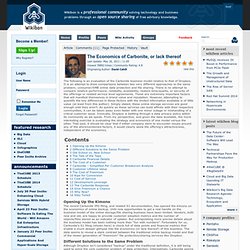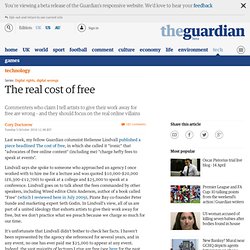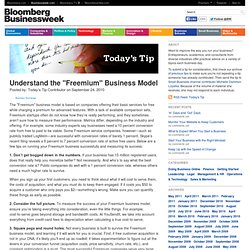

Carbonite Business Model and Dropbox. The following is an evaluation of the Carbonite business model relative to that of Dropbox.

It is an attempt to draw comparisons between two very different approaches to the same problem; consumer/SMB online data protection and file sharing. There is no attempt to compare relative performance, reliability, availability, restore time/quality, or security of the offerings or related service level agreements. These are extremely important factors that will manifest themselves in brand value and reputation.
However, attempting to quantify the key differences in these factors with the limited information available is of little value (at least from this author). Simply stated, these online storage services are good enough until they aren’t. Opening Up the Kimono The recent Carbonite IPO filing, and related S1 documentation, has opened the kimono on the economics of online backup. Different Solutions to the Same Problem Old School vs. The real cost of free. Last week, my fellow Guardian columnist Helienne Lindvall published a piece headlined The cost of free, in which she called it "ironic" that "advocates of free online content" (including me) "charge hefty fees to speak at events".

Lindvall says she spoke to someone who approached an agency I once worked with to hire me for a lecture and was quoted $10,000-$20,000 (£6,300-£12,700) to speak at a college and $25,000 to speak at a conference. Lindvall goes on to talk about the fees commanded by other speakers, including Wired editor Chris Anderson, author of a book called "Free" (which I reviewed here in July 2009), Pirate Bay co-founder Peter Sunde and marketing expert Seth Godin. In Lindvall's view, all of us are part of a united ideology that exhorts artists to give their work away for free, but we don't practice what we preach because we charge so much for our time. It's unfortunate that Lindvall didn't bother to check her facts. Understand the "Freemium" Business Model.
The "Freemium" business model is based on companies offering their basic services for free while charging a premium for advanced features.

With a lack of available comparison sets, Freemium startups often do not know how they’re really performing, and they sometimes aren’t sure how to measure their performance. Metrics differ, depending on the industry and offering. For example, some industry experts say businesses need a 10 percent conversion rate from free to paid to be viable. Some Freemium service companies, however—such as publicly traded LogMeIn—are successful with conversion rates of barely 1 percent. Skype’s recent filing reveals a 6 percent to 7 percent conversion rate of active free users. 1. When you sign up your first customers, you need to think about what it will cost to serve them, the costs of acquisition, and what you must do to keep them engaged. 2. 3. 4.
Free: It Works, It Cries, It Bites. Chris Anderson's new book, Free: The Future of a Radical Price (available for free in text form and as an audio book), is stirring controversy and a spicy conversation around the blogosphere.

The current wave of discussion started with a critical review by Malcolm Gladwell in the New Yorker. In his review, Gladwell defends journalism and goes negative on "Free. " Freemium and Freeconomics. This week we saw the release of Chris Anderson's book Free and reviews from the New Yorker (Malcolm Gladwell) and the Financial Times (John Gapper).

I'd like to talk a bit about the firestorm that freeconomics (fed by Chris' book) has unleashed but first we need to clarify something. The FT piece says: The most plausible contender for an "entirely new economic model" made possible by the internet is what Fred Wilson, the New York venture capitalist, has dubbed "freemium". There was no dubbing by me. In March 2006, I wrote a post called My Favorite Business Model in which I outlined the freemium concept and I asked the readers to help me give it an easy handle. Mark McLaughlin: Audiences Don't Pay for Content. The media industry needs to get healthy but we won't get there if we think about the Internet as the reason that consumers have stopped paying for content.

Instead, we need to take a dispassionate view of mass media content and ask ourselves why the Internet is a reason that consumers should start paying for content. A Brief History For 30 years, the people closest to the leading edge of digital media have discussed the best way to get the user to pay for content. Only about 10 percent of the total information collected everyday in the newspaper's newsroom and features desk...is actually used in the paper, and yet, according to most surveys, the reader only reads 10 percent of what has gone into his paper. It seems, therefore, the whole agony of distribution is undergone in order to feed each reader just one percent of the material that has been so expensively collected. ("Goodbye Gutenberg" Anthony Smith, 1981) That was 1981! Today's Sense of Urgency Traditional media pundits like Mr.